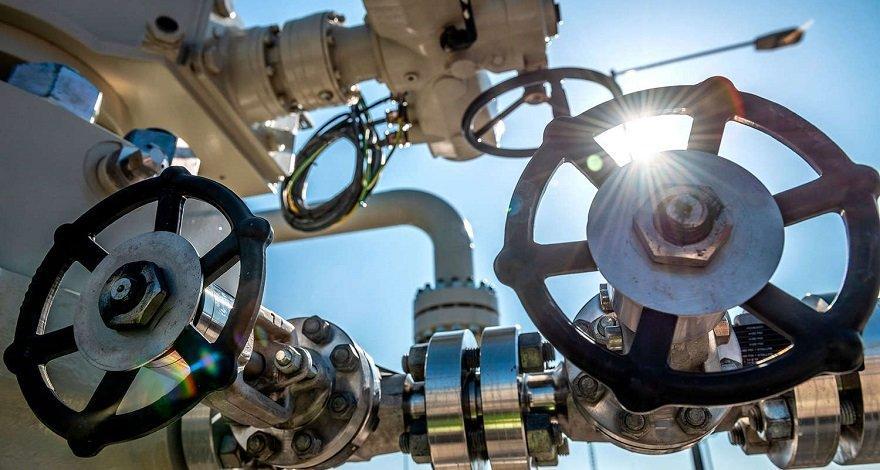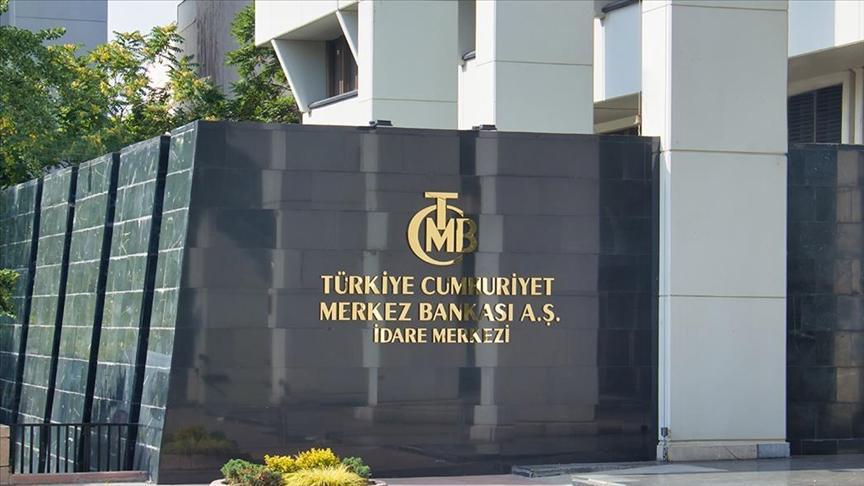CBA cuts interest rate collar: aspects of monetary and credit policy Review by Caliber.Az
The war in Ukraine has significantly increased the global energy, food, and transport crises, further ratcheting up inflation. The threat of recession looms on the horizon in the US, as well as in the EU, where the sanctions stand-off with Russia has intensified the industrial decline due to the high cost of energy and raw materials. In the new environment, regulators in a number of countries are increasing the refinancing rate in the hope of curbing price increases, even if only by slowing down lending to the economy. A different trend is seen in China and Türkiye, where, on the contrary, the discount rate is reduced. For its part, the Central Bank of Azerbaijan also has cut the lower bound of the interest rate collar to 4 per cent since September 1.

The West's confrontation with Russia and the sanctions regime, which intensified with each passing month, resulted in the greatest energy and commodity crisis since the end of World War II, exacerbated by the disruption of established transport and logistics links and supply chains. All of this has played a role in triggering inflation and pushing up fuel and food prices, increasing hunger and poverty in the world's poorest countries. High energy and gas costs are now forcing European and partly American industries to cut production and even close factories. According to Bloomberg, energy-intensive industries - steel, non-ferrous metals, chemicals, fertilizers, building materials, etc. - have been hit hardest. As a result, rising production costs and overheads reduce demand and sales and, as a consequence, unemployment in related industries grows, increasing the burden on social funds. Such negative processes affect most countries of the world, even the highly developed ones, leading to increased budget expenditures and government debt, all of which lead to a slowdown in global economic growth.
About a month ago, the International Monetary Fund (IMF) lowered its global economic growth forecast by 1.2 percentage points from the initial January estimate of 3.2 per cent. On the last day of August, rating agency Moody's also cut its forecasts for global GDP growth from 3.1 per cent to 2.5 per cent for 2022 and from 2.9 per cent to 2.1 per cent for 2023. Experts from other international financial institutions and rating agencies share a similar pessimism.
This is not surprising, because since mid-summer, fears have intensified about a further rise in the discount rate of the US Federal Reserve System (Fed) to 2.5 per cent (expected to 3 per cent by year-end) as well as of the EU central bank which increased its rate to 0.5 per cent by July 21 and is planning a similar increase in September. Same processes are observed in a number of other developed countries.
By regulating the discount rate, global central banks set the interest rates at which they lend to commercial banks and deposit their money, as well as setting other rates, such as those for deposits and loans from commercial banks, and for forfeitures and other transactions. Together with monetary regulation, the most important function of the refinancing rate is to contain a consumer and monetary inflation. During periods of stability and recovery, or in order to bring the economy out of recession, the discount rate is reduced, increasing the inflow of financing into the economy. If the financial system "overheats" and consumer prices rise, the rate increases, playing the role of a "brake" for banks and other sources of financing of production, trade turnover, investment flows, etc.

Slowing economic growth by raising interest rates is the inevitable price to pay for curbing inflation. Regulators in the US and the EU have taken this route because, amid the energy and food crises, the well-being of the population is recognised as a higher priority than maintaining GDP growth. However, rising rates in the leading Western regions inevitably lead to a decline in global trade, and against this background, since September 1, share markets of major Asian and Pacific states accelerated the fall: in trading Hong Kong Hang Seng Index decreased by 1.7 per cent, Chinese Shanghai Composite - by 0.1 per cent, and it is possible that these trends will be long-term. However, a different view is taken in China, whose economy has been under considerable pressure relatively recently due to quarantine measures in connection with the outbreak of the pandemic coronavirus. The People's Bank of China (PBOC) on August 22 reduced the benchmark interest rate on one-year loans (LPR) from 3.7 per cent to 3.65 per cent, the rate on five-year loans was also lowered to 4.3 per cent per annum from 4.45 per cent. The LPR was reduced by 5 basis points in December last year and another 10 points in January this year. The NBK expects that lower interest rates and cheaper bank loans will boost support for the Chinese economy, which has recently slowed amid soaring energy and food prices in particular, as well as the country's real estate crisis. Due to the strong export orientation of the Chinese economy, increased production and foreign trade have much less impact on the domestic market without causing inflationary surges, especially in view of the sterilisation of the increasing foreign exchange earnings of the country and the tight regulation of the renminbi.
A similar trend can be seen in Türkiye, where, for the first time since the end of 2021, the Turkish central bank decided on August 18 to lower its key interest rate from 14 per cent to 13 per cent despite a very high inflation rate of around 79.6 per cent in July. Such a move by the regulator is explained by the fact that the country's authorities are following a "new economic model" involving low interest rates and a weak lira - as a tool for increasing exports and attracting investment in industry.

In Azerbaijan, which has had a rather tight monetary and credit policy since August 2021, the Central Bank (CBA) has consistently increased the refinancing rate in order to contain the inflation factor: the discount rate rose from 6.5 per cent last autumn to 7.75 per cent in March this year. Since then the rate has not changed and the upper limit of the interest rate corridor has remained at 9.25 per cent and the lower limit at 6.25 per cent.
Nevertheless, despite persistently high consumer prices due to the imported inflation factor, Azerbaijan has managed to avoid many disasters and mistakes affecting the economies of neighbouring countries. Despite high oil and gas prices, energy and fuel tariffs have remained unchanged since the beginning of the year, which in itself has become an anti-inflationary deterrent. According to the forecasts of the CBA, a large surplus of the current account balance is expected by the end of this year, which strengthens the balance of the currency market and is the main anchor of monetary stability - the Azerbaijani manat has maintained enviable stability for a number of years. At the same time, high world energy prices - the average price of Brent oil in the first half of the year amounted to $105.4 per barrel - increased the trade surplus 3.5 times. Favorable trade conditions, as well as a surplus balance of payments, contribute to the growth of strategic foreign exchange reserves of the country: according to the CBA data, foreign exchange reserves in January-May 2022 increased to $54.2 bln. It is important that the global crisis has not slowed down the process of reducing the debt of the country - on July 1 this year the foreign debt of Azerbaijan was less than 10.7 per cent of GDP, which can certainly be estimated as one of the best results in the world.
All this positive news created prerequisites for some easing of monetary policy, and the CBA decided to reduce the lower boundary of the interest rate corridor by 2.25 per cent from 6.25 per cent to 4 per cent on September 1, which will create an opportunity to form a balanced interest rate in the financial market of the country. "We have set a goal of gradually bringing interbank interest rates closer to the interest rate collar, avoiding sharp fluctuations of interest rates in various segments of the financial market. Depending on the macroeconomic and interbank market situation, as well as the impact of the introduction of new instruments on various segments of the financial market, the limits of the CBA interest rate collar will be reduced," the regulator said in a statement.

Since autumn, the central bank is starting to implement a new concept of monetary policy instruments aimed, among other things, at optimising operations in the securities market. In particular, current yields on notes and government securities are significantly lower than the lower threshold of the interest rate collar. Decreasing the threshold to 4 per cent, however, would boost the interbank money market. In addition, this decision will make it possible to sterilize excess liquidity that exists in the banking sector on advantageous terms and create conditions for the formation of balanced rates on the interbank money market. Among other things, lowering the parameters of the interest rate collar would improve open market operations, with one-day sterilisation deposit operations and direct and reverse repo transactions, including seven-day liquidity provision operations, if necessary. For these transactions, the rate will correspond to the lower threshold of the interest rate collar. "Depending on the money market situation, especially in the interbank market, other open market operations may also be applied," the CBA stressed.
Intensified sterilisation operations are important in terms of ensuring balanced growth of credit investments in the economy amid inflationary pressures and the need to maintain macroeconomic stability in the medium term.








